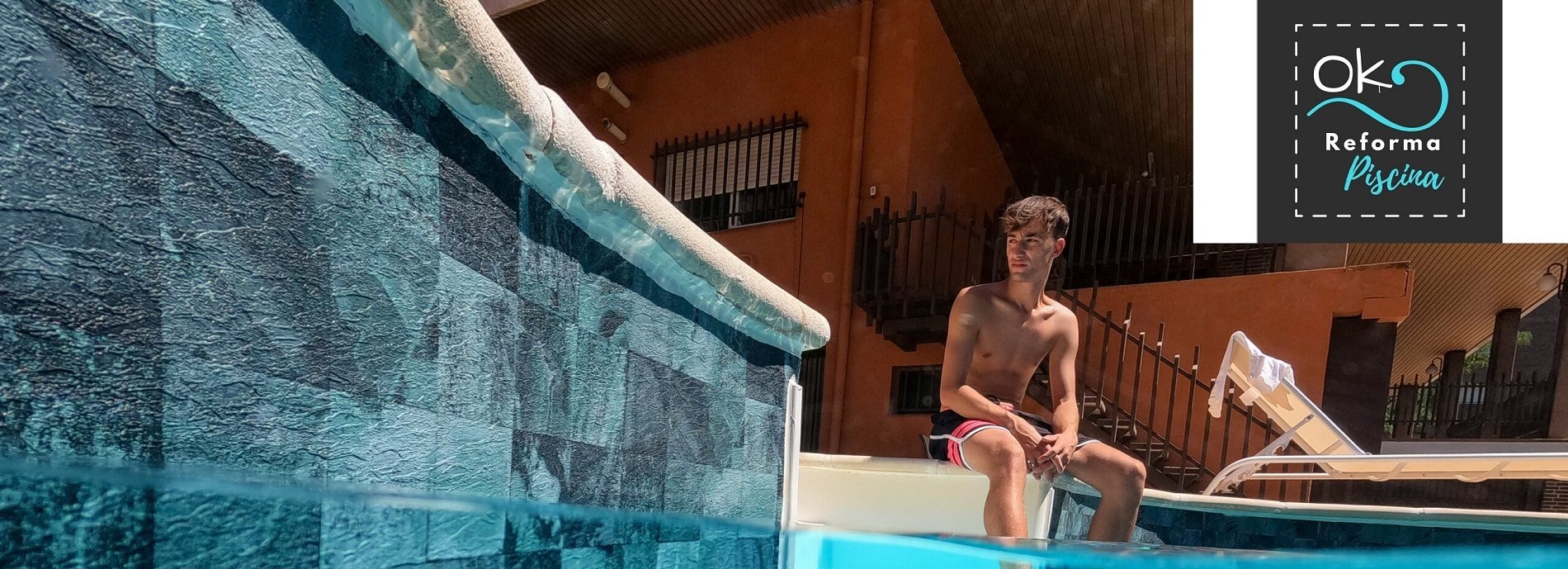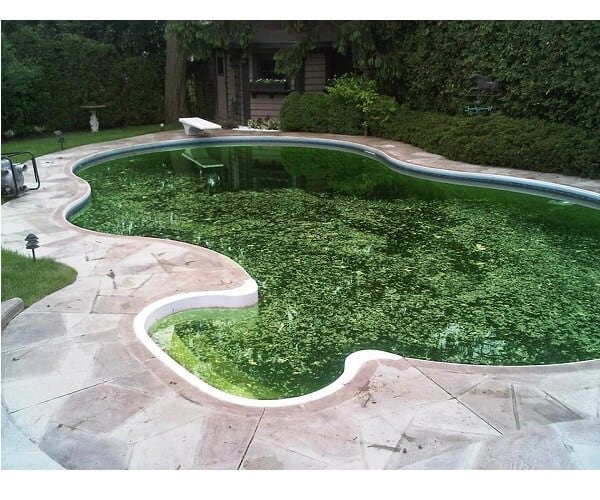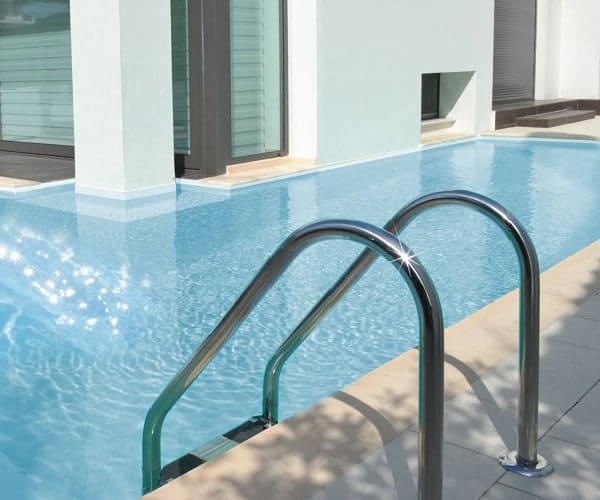
Table of contents of the page
In the pool water maintenance guide and within Do not ignore the green pool water, put a solution, now! we explain to you What is green pool water? Or the same: having green algae in the pool
Do you notice your pool water is cloudy or greenish? If so, don't worry: this is a common problem that can be easily solved. In this blog post, we're going to delve into the causes of green pool water and how to return it to its clear, pristine state. Green pool water is produced when algae become present in the system; usually caused by poor filtration, improper balance of chemicals, and poor circulation. We'll look at how each of these issues contributes to a spike in algae growth and provide our readers with step-by-step instructions on how best to treat each of them individually. Buckle up and head out into the waters of your oasis: it's time to make them crystal clear again!
What are Algae in swimming pools?
Algae blooms in swimming pools are a common problem that can cause discomfort and frustration to swimmers.
Algae blooms in swimming pools can be caused by several factors, such as hot weather, high nutrient levels, and poor circulation.
Additionally, algal blooms can also be caused by runoff from nearby sources of pollution, such as factories or agricultural fields.
- Warm weather is often a trigger for algae blooms, as warmer water temperatures provide ideal conditions for algae growth. High levels of nutrients can also contribute to algae growth, as the nutrients provide a food source for the algae. Poor circulation in a pool can also cause algae blooms, as stagnant water is more likely to encourage algae growth.
- Runoff from nearby pollution sources is another potential cause of algae blooms in swimming pools. Pollutants such as fertilizers and pesticides can contain nutrients that can promote algae growth. Additionally, contaminants can also introduce new strains of algae into a pool that may be more resistant to chlorine or other disinfectants.
What is green pool algae?
What does it mean to have water with green algae in the pool?

What do we mean by green pool water?
The green water in a pool is a consequence of the development of microalgae (algae proliferation). Click on the specific entry for pool algae, where you will learn the causes of why algae appear in the pool and types of algae according to their color to be able to permanently treat them.
- Together, this Green water in swimming pools is usually one of the main problems generated by poor maintenance..
- In addition, green pool water, apart from giving said facility a rather unpleasant appearance, can also be the cause of multiple infections such as otitis, this is because generally the swimming pools with green water They tend to accumulate many pathogenic agents.
Importance of green algae in our ecosystem

What is the importance of green algae?
Overall, algae are an essential part of our environment and provide many important services such as oxygen production, the carbon cycle and food for marine animals.
Without them, our planet could not support life as we know it!
From contributing to the regulation of the global climate to providing food sources for fish and other aquatic organisms, green algae. Without them, our planet could not support life as we know it! Thank you for taking the time to learn more about green algae and their incredible importance in our ecosystems!
It is important that we be better stewards of our environment and protect the habitats where these organisms live.
To do this, we must reduce pollution from sources such as agricultural runoff or wastewater discharge. Additionally, reducing human activities such as extractive industries will help ensure that natural areas are conserved for future generations. By all working together, we can ensure that green algae continue to
Finally, we want to provide you with a link that we find very interesting: Algae cycle: Algae and their social, ecological and economic importance.
Types of green algae in nature

Chlorophyta algae is the most widespread type of green algae, covering freshwater and marine systems around the world.
- It has a bright green color due to its abundance of chloroplasts, essential for photosynthesis to occur.
- This type of algae can be found in various forms, such as filamentous, unicellular or colonial.

On the other hand, Phaeophyta are a much darker shade of green, brown or even black due to their particular cellular structures.
These cells contain specialized pigments called fucoxanthin that give them their unique color and also help in photosynthesis. This type of algae is usually found in colder regions near coastal areas such as estuaries or tidal pools where the water is richer in nutrients. They also tend to grow in clumps and form mats, which can be seen along rocky shores or on the sea surface.
The benefits of preventing algae growth

The benefits of preventing algae growth are twofold.
- First of all, algae can have a negative impact on the environment. They can grow out of control and choke off the oxygen of other aquatic creatures, causing fish to die. Algae can also make bathing and recreation in waterways unsafe due to its slimy texture and sometimes toxic nature.
- Secondly, algae can be aesthetically displeasing, making lakes and ponds appear dirty and green. Bathers don't want to jump into a pool of green slime, and homeowners don't want their land covered in it either.
- Ultimately, preventing algae growth is important for the health of both people and the environment.
The consequences of allowing algae to take hold

Algae are simple, plant-like organisms that live in water.
They are a type of phytoplankton, which are microscopic plants that drift in the oceans and other bodies of water. Algae are an important part of the marine food web and play a role in the global carbon cycle.
However, algae can also have a negative impact on the environment.
- When algae bloom, or when their populations grow out of control, they can cause problems for fish, wildlife, and humans.
- Algal blooms can prevent sunlight from reaching grasses and other underwater plants, causing them to die.
- They can also release toxins that harm fish, birds, mammals, and people.
- In some cases, algal blooms can cause hypoxia, or low oxygen levels in the water. This can create dead zones where fish and other animals cannot live.
- Algae blooms can also cloud waters and make them unsafe for swimming.
To conclude on this topic, we indicate a page where they explain: algae and cyanobacteria can form “blooms.”
What is green pool water or algae?
Video What is green pool water or algae?
Next, in the video we explain what Algae are, its Importance and Usefulness of Algae
Proliferation of green algae in the pool: a very common phenomenon
What is green pool water: Algae proliferation in swimming pools is a common problem that can cause discomfort and frustration to bathers.

The most common type of algal bloom in swimming pools is green algae.
In this blog post, we will discuss the causes and treatments for green water in swimming pools. We will also talk about the different types of algae and their corresponding treatments. If you are having problems with green water in your pool, read on for solutions!
- Obviously, pool owners may sometimes find that their pools have turned green, and this is usually due to the result of an algae bloom, which can be caused by a number of factors.
- Among them, the hot climate, lack of pool maintenance and high levels of phosphates in the water.
- Although, as we will discover, algae blooms can also be caused by runoff from lawns, gardens, or a host of other reasons.
Multiple Circumstances of Green Pool Water Causes

Algae blooms in swimming pools can be caused by several factors, such as hot weather, high nutrient levels, and poor circulation.
There are many factors that can contribute to an algae bloom, including warm water temperatures, lack of filtration, and poor pool maintenance.
- As we just mentioned, green algae blooms are usually caused by hot weather, high levels of nutrients, and poor circulation.
- If you suspect your pool has a green algae bloom, it is important to test the water and consult with a pool professional.
- Furthermore, a pool professional can help you determine the best course of action to treat your pool.
Green water in swimming pools can be caused by various factors.

Improper pool maintenance, excessive use of chemicals, environmental conditions, and high levels of bacteria are some of the most common causes.
- Poor circulation or filtration systems can also cause green water.. If the pump or filter is not working properly, it will not remove algae or other contaminants that make their way into your pool. This can cause a buildup of waste which, in turn, leads to green water.
- When chlorine levels are too low, The disinfectant has difficulty eliminating bacteria that may be present in the pool. Without adequate levels of chlorine, it is easier for bacteria and algae to grow and contaminate pool water.
- El excess phosphates in the pool It can also help pools turn green. These phosphates are usually present in fertilizers, detergents and organic materials. When these phosphates enter the pool, they can act as a food source for the microorganisms that cause green algae blooms.
- Finally, the high temperatures and lots of direct sunlight They can lead to an abundance of photosynthetic organisms such as algae, which then cause your pool water to turn green. To prevent this from happening, it is important to keep the water clean and maintain adequate chlorine levels throughout the season.
By following these simple guidelines and taking the time to properly maintain your pool, you can enjoy crystal-clear water all season long.
In short, poor maintenance, chemical imbalances, environmental conditions, high bacteria levels, poor circulation or filtration systems, low chlorine levels. To ensure a clean pool, it is important to perform regular maintenance and use the correct levels of chemicals. Additionally, monitoring environmental conditions, such as temperature and sunlight exposure, can help you keep your pool free of green water.
How to identify and eliminate the different types of algae?

Different types of algae in the pool
There are many different types of algae, but they can broadly be classified into two main categories: macroalgae and microalgae.
- On the one hand, there are macroalgae, which are large, visible algae that are often seen growing on the surface of ponds or in aquariums.
- And, on the other hand, microalgae: much smaller and not always visible to the naked eye.
How to Eliminate Macroalgae from the Pool
Treating macroalgae is usually a matter of manually removing it from the body of water and then disposing of it properly.
- This can be done by removing them from the surface with a net or by vacuuming them from the water.
- Once macroalgae have been eliminated, it is important to take measures to prevent their reappearance.
- This can be done by ensuring that the water body has adequate circulation and filtration and maintaining proper water chemistry.

How to eliminate pool microalgae
Microalgae are more difficult to remove because they are very small and often spread throughout the water column.
To treat microalgae, various chemicals can be added to the water that will kill or inhibit their growth.
- Chlorine is often used for this purpose, but it can be harmful to other aquatic life, so it should only be used as a last resort.
- Copper sulfate is another common algaecide that is effective against many types of microalgae.
- However, it can also be harmful to other aquatic organisms, so it should only be used under the supervision of a qualified professional.
Types of pool algae
So, there are three main types of algae that can flourish in swimming pools: green algae, black algae, and mustard algae.
- Firstly, The most common type of green algae is the one that has a bright green color and is actually often found in swimming pools. NHowever, it is not usually harmful to humans. However, it can discolor the water and make it look dirty.
- In second place, black algae are rarers, but they can be harder to remove once they take root.
- Thirdly, mustard seaweed They usually form in areas that do not receive much sunlight, and can give water a yellow or orange tint.
- And finally, you can also find pink algae.
If you suspect that your pool has an algae bloom, it is important that you act immediately.
- The first step is to increase the amount of chlorine in the water. This will kill the algae and help prevent it from spreading. You should also vacuum the pool regularly to remove dead algae from the bottom.
- If the problem persists, you may need to shock the pool with a high dose of chlorine to completely eliminate the algae bloom.
Although, the best way to prevent green algae blooms is to maintain proper water chemistry and circulate it properly. It is also important to remove any organic matter from the pool, such as leaves or twigs. If you have a green algal bloom in your pool, there are several treatment options available.
How to remove green water from the pool

Solutions to problematic green pool water
If you are having problems with green water in your pool, read on for solutions!
One of the most common problems pool owners face is green water. Green water is caused by algae growth and can make your pool look unattractive and dirty. Although there are several products on the market that claim to treat green water, the best way to get rid of it is to prevent it from occurring in the first place.
There are several ways to treat green pool water.
The most common is to add chemicals such as chlorine or algaecide.
- This will kill the algae and prevent it from spreading. Pool owners should also vacuum their pools and brush the walls to remove any algae that may have already attached.
- They should also make sure to run the filter for at least 8 hours a day to remove any algae spores from the water.
How to clean green pool water

Green water pool shock treatment Eliminate green water from your pool in just a few steps

How to recover green pool water: Goodbye to the green pool, complete rescue guide

Is the salt pool exempt from having green water?
Green algae can cause your pool water to turn a cloudy green color and can be a nuisance to swimmers. There are several treatments for the proliferation of green algae, which we will talk about below.
The most common solution to eliminate green pool water is to apply a shock of chlorine or another disinfectant agent.
This process consists of adding an extra dose of chemicals to kill the existing algae in the pool and help prevent its future proliferation. Other measures may be necessary if the problem persists, such as running the filter longer than usual or vacuuming out excess debris. To prevent pool water from turning green, it is important to maintain adequate chemical levels and good filtration. . This will help keep the pool clean and free of algae growth while keeping the water clear and inviting. Regular testing of pH, chlorine, alkalinity, calcium hardness, cyanuric acid, and other chemical levels should help ensure that all components are properly balanced. If chemicals are needed for shock treatment or other needs, it is important to only use those specifically designed for pools in order to avoid any reaction that could cause further problems. Additionally, regular vacuuming will help remove debris from the bottom of the pool before it has a chance to decompose and feed algae blooms. With these measures in place, your pool should be free of green water and be a fun and welcoming space for the whole family.
How to prevent green algae from proliferating in the pool
There are some things you can do to prevent green water.

1. Point to prevent green water in the pool:
Keep your pool clean
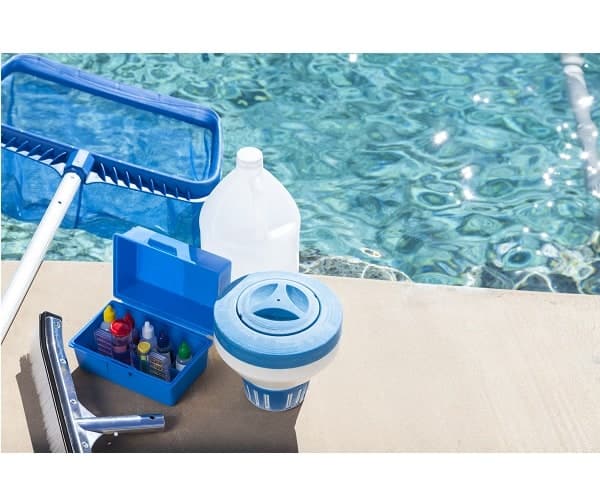
Useful guide to know how to clean the pool
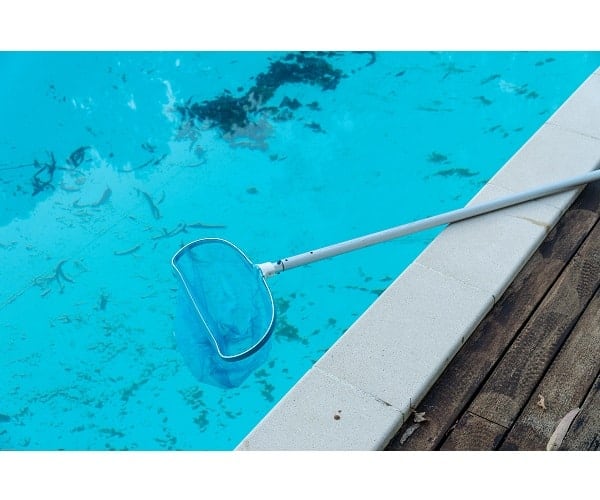
Guide to maintaining a pool with water in perfect condition
This may seem like a no-brainer, but it's important to keep your pool free of debris so that algae has nothing to cling to.
- Regularly cleaning your pool will also help remove any organic material that could be acting as a food source for algae.
2nd prevention so that green algae do not proliferate in the pool:
Keep the chemical values of the pool water within their ideal ranges
3 Step to avoid green algae in the pool:
Recirculate and filter water
Ensuring water is circulated and filtered properly is another key step in preventing green water.
- By circulating the water, you are ensuring that all areas of the pool are being treated with chemicals and that the filter is trapping any algae spores that may be present.
- As this will ensure that all waste is properly filtered before it has a chance to settle to the bottom of the pool, reducing algae growth in the process.
- Plus, by circulating and filtering the water regularly, your disinfectant chemicals will remain effective for longer and help keep your pool clean throughout the swimming season.
4th Process to prevent green algae in the pool
Use the right chemicals

What is the pool pH level and how to control it
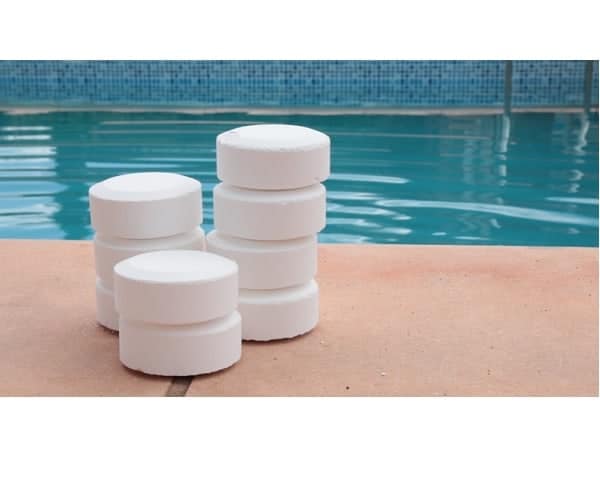
What are the essential pool chemicals for maintenance?
Using the right chemicals in your pool will also help prevent green water.
- Be sure to maintain the proper pH level in your pool and use algaecides and chlorine regularly.
5th way to avoid green pool water
Control the water temperature and sun exposure time: Give it shade
Algae needs sunlight to grow, so shading your pool will help prevent green water.
- If you live in an area with a lot of trees, you may consider investing in a cover for your pool to keep the sun out of it when you are not using it.
6th Action: Carry out a pool shock treatment on scheduled occasions

Green water pool shock treatment Eliminate green water from your pool in just a few steps

Shock treatment for swimming pools with saline chlorinator: The efficient solution for crystal clear water»

What is pool shock treatment?
Shocking your pool regularly is also an effective way to prevent green water.
- Pool shocks contain high levels of chlorine which will kill any algae present in the water and help prevent new growth from occurring.
- For this reason, it is best to shock your pool weekly or as soon as you notice the water is green. A good rule of thumb is to check chlorine levels and determine if the level has dropped below 2 ppm, indicating it is time for a shock treatment. When shock treating your pool, always read the instructions on the shock container carefully and follow all instructions. Also, remember that shock treatments can cause the water level in your pool to drop, so make sure you have enough water to refill it. Lastly, always wear protective goggles when handling the pool shock as it can irritate your eyes and skin.
- By keeping chlorine levels balanced and shock treating your pool regularly, you will be able to maintain your pool's water clarity and prevent green water from reappearing. Happy bathing!
